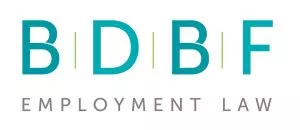The COVID-19 Job Retention Scheme (Scheme) is designed to assist employers to retain employees in the face of the considerable challenges presented by the global coronavirus crisis. On 26 March 2020, the Government published guidance on how the Scheme is intended to operate. The guidance was updated on 4 April 2020 and again on 9 April 2020. In this briefing, we consider what the latest guidance means for employers who wish to furlough employees and apply for funding under the Scheme. This briefing was last updated on 13 April 2020.
A. BACKGROUND TO THE SCHEME:
The coronavirus crisis has had a drastic impact on businesses across many sectors, causing closures, lost custom, lower revenue and cash flow problems. The result is that many businesses will struggle to pay employees and have been left with no choice but to contemplate redundancies. The Scheme has been introduced to encourage employers to retain their workforce throughout this difficult time and avert mass redundancies.
Under the Scheme, the Government will pay 80% of the wage costs of employees who are placed on temporary leave by their employer. This type of leave is to be known as "furlough". The payments will be capped at £2,500 per month. Initially, the Scheme will cover payments for a three-month period between 1 March 2020 and 31 May 2020.
The Scheme covers employees and those with other employment statuses. For ease of reference, in this note the term "employees" is used to cover all eligible individuals. We highlight any special rules applying to those with particular employment statuses.
On 26 March 2020, the Government published guidance for employers (Employer Guidance) and guidance for employees (Employee Guidance) on how the Scheme is intended to operate. The Employer Guidance and Employee Guidance was updated on 4 April 2020 and again on 9 April 2020.
B. ELIGIBILITY FOR FUNDING:
Which employers can apply for funding under the Scheme?
The Scheme is open to any UK employer, regardless of their size or sector. This includes individual employers, who are able to furlough employees such as nannies, provided they meet the other eligibility criteria.
To qualify, the employer must have:
- created and started a PAYE payroll scheme on, or before, 28 February 2020;
- enrolled for PAYE online (this can take up to 10 days); and
- a UK bank account.
In addition, where a company has gone into administration, the administrator may be able to access the Scheme.
The Employer Guidance highlights that employers who receive public funding for staff costs, or to provide services necessary to the response to coronavirus, are not usually expected to apply for funding under the Scheme.
Which members of the workforce are covered by the Scheme?
Not all members of the workforce are covered by the Scheme. Three criteria must be met in order for a claim to be made:
- the employee must have been on the PAYE payroll on 28 February 2020;
- the employee must not undertake any work for the employer (or any linked or associated organisation) once furloughed. If the employee is to carry out any work, even on reduced hours, they will not be eligible; and
- the employee must have one of the eligible statuses listed in Table A below.
Employees who have more than one employer can be furloughed by one employer and continue to work for their other employer. Each job is treated separately, and the cap applies to each separately.
Foreign nationals and employees on all categories of visa are eligible to be furloughed.
To view the full article, please click here.
The content of this article is intended to provide a general guide to the subject matter. Specialist advice should be sought about your specific circumstances.

